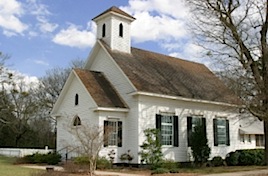The unsurprising decline of the mainline
The decline of the Protestant mainline in America began over 150 years ago. It has continued ever since, picking up momentum since the 1960s.
We don't really need more evidence, but here it is courtesy of George Barna's latest report.
A generation ago the Protestant landscape of America was dominated by the six major mainline denominations (American Baptist; Episcopal Church; the Evangelical Lutheran; the Presbyterian Church (USA); the United Church of Christ; and the United Methodist Church.)
The growth among evangelical and Pentecostal churches since the 1950s, combined with the shrinking of the mainline sector, has diminished mainline churches to just one-fifth of all Protestant congregations today.
Down is the percentage of families with young children, single young adults. Up goes the percentage of adults over 60.
Another hurdle for the mainline bodies has been attracting minorities. These churches struggle in reaching Hispanics and Asians.
Just one-third (31%) of mainline adults believe they have a personal responsibility to discuss their faith with people who have different beliefs.
Yet mainline churches are awash with money. They generate more than $15 billion in donations each year. During the past decade the median church budget of mainline congregations is up 51%.
A decade ago the median age of mainline Senior Pastors was 48; today it is 55. Only 12% of them claim to have the spiritual gift of leadership.
Adherents attend church services less frequency than they used to. Volunteerism in these churches is down by an alarming 21% since 1998.
Less than half (49%) of all adherents describe themselves as “absolutely committed to Christianity.”
A majority are not involved in some type of personal discipleship activity. Less than half contend that the Bible is accurate in the life principles it teaches. Only half of all mainline adults say that they are on a personal quest for spiritual truth. And when asked to identify their highest priority in life, less than one out of every ten mainline adults (9%) says some aspect of faith constitutes their top priority.

